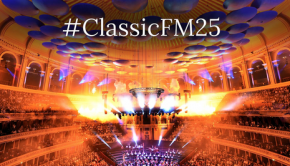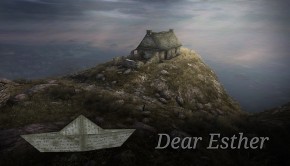Jessica Curry Interview: A Delicate Emotional Balance
Jessica Curry is a composer, sound artist and co-director of British game studio thechineseroom. With a background in scoring films and multi-media projects, Curry’s first game score was written for award-winning independent game Dear Esther. Curry has also worked on thechineseroom’s other games including Korsakovia and the upcoming titles A Machine for Pigs and Everybody’s Gone to the Rapture.
In this detailed interview, Curry gives insight into her musical background and her close collaboration with thechineseroom’s lead designer Dan Pinchbeck. She discusses her approach to scoring Dear Estherand Korsakovia, reveals the challenges and rewards of creating music and sound effects for games, and gives an insight into her upcoming soundtracks.
Interview Credits
Interview Subject: Jessica Curry
Interviewer: Simon Elchlepp
Editor: Simon Elchlepp
Coordination: Simon Elchlepp
Interview Content
Simon: Jessica Curry, thanks for taking the time today to talk about your work. To start things off, could you give us some information about your musical background and which composers have inspired your work in general? How did your interest in an eclectic range of different media (films, installations etc.) originate and how did it shape your personal musical style?
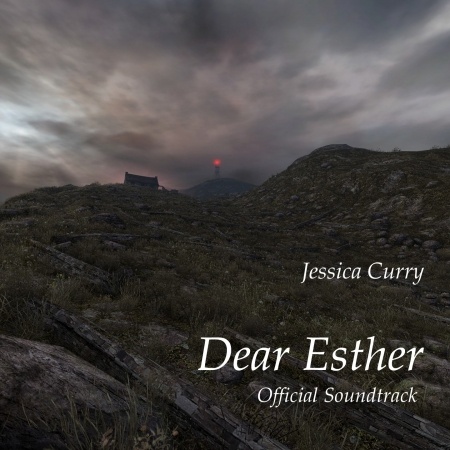
Jessica Curry: I started playing the piano when I was four because my brother was having lessons and I didn’t want to miss out! He gave up, but it became a lifelong passion for me. Later on I learned to play cello and played in orchestras and also sang in choirs. I couldn’t decide what to study at University and eventually chose English Literature over music. After that I spent three years doing a Postgrad in Screen Music at the National Film and Television School, which was a tough place to be. My Head of Music said to me, “the only reason a woman should be in my office is to clean it.” I was the youngest person at the film school and I was pretty miserable there, but it toughened me up and I learned a lot.
I am completely and unhealthily obsessed by The Cardiacs, Joni Mitchell, Radiohead, Philip Glass, Thomas Newman, Bach, Antony and the Johnsons, The Notwist and John Tavener. Currently on constant play are Rockettothesky’s “Oh Anna” and Jeff Bridges singing “Brand New Angel” on the Crazy Heart soundtrack. Wish I’d written that one (actually, and that Jeff Bridges were here to sing it to me!).
I’ve always been interested in a very wide range of artistic genres and what is important to me is the emotional response that it elicits — to me it doesn’t matter if that’s a film, music, a painting or a poem. I have always sought out collaborators who are making interesting, beautiful work and that connection has always been more important to me than the field that they are working in. I like spectacle, so I think I have always been drawn to composers whose work is applied to the visual domain — I think that when it works, the melding of sound and image is one of the most powerful and extraordinary experiences.
Simon: Could you describe to us how your collaboration with Dan Pinchbeck of thechineseroom came about? How did you come to score Dear Esther and what exactly attracted you to the project?
Jessica Curry: Dan and I have worked together since 2003, when we were commissioned by The Wellcome Trust in London. We spent some time figuring out what medium suited us best and when Dan made his first game we knew we’d found our perfect space for collaboration. Dear Esther fit my artistic obsessions like a morbid glove! Death, love, grief, loss, beauty, the search for meaning — it’s got it all. Dan is a wonderful writer and there is an alchemy that means that when his words are set to my music they become better and when my music is together with his words that adds something too. That’s the ideal collaboration: where each art form adds something intangible but absolutely necessary into the mix.
Simon: Given that Dear Esther was your first game score, how did you decide which kind of music would work for the game and what ensemble of instruments to use? In how far is the music that we hear in the game a continuation of your own personal style?
Jessica Curry: I started work on Dear Esther at a very early stage in its development and Dan would send me snippets of voice-over, images, walkthroughs etc. I just sat down at the piano and played — I always work very intuitively and my composition is usually an emotional rather than an intellectual response. There wasn’t a point when I had a conscious thought process of “oh, a lonely sounding cello would work really well here.” Of course, composing is an intellectual process and you are making all those decisions all of the time, even if they’re on a subconscious level, but they’re not at the forefront of my mind when I write music.
Dear Esther was the first music I’d written after a four-year gap to raise my child and I remember this huge outpouring of music — it was a huge relief to be writing again after such a long time spent in the creative desert! I loved writing this music and I think maybe you can hear this passion and sense of release in the score. It was exactly the music I wanted to write — no compromises — and that was an incredible and exhilarating feeling.
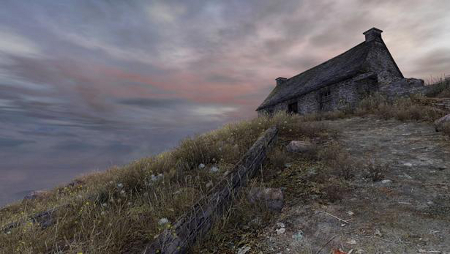
Simon: As a rather minimalist and ambient soundtrack, Dear Esther seems to pose a particular challenge for a composer, as the music relies on the ‘right’ combination of a limited number of textures, and on a carefully calibrated interplay between emotionality and restraint. Working with only a small number of instruments, how difficult was to find the right sonorities that would give the soundtrack its strong atmosphere and also provide sufficient variety throughout the game and the album? Equally, how did you decide when to make the music more reserved and when to emphasise its emotional expressiveness?
Jessica Curry: Again, it all felt very intuitive. I love writing for strings, and as a cellist I feel a particular affinity to their tone, the sound and the strings’ ability to sing. I never wanted to overwhelm the game and so there were times where the Scottish sound — less vibrato and more restraint — felt more appropriate. I think it makes the lush tracks sound even fuller, so for me it’s a really pleasing contrast that works well. The players brought a lot of ideas and intuition on the day.
Simon: You tackled the work on Dear Esther based on your experience with scoring films. How did you and Dan make your linear compositions work in the context of a non-linear game? Was Dear Estheryour first experience in scoring for a non-linear medium?
Jessica Curry: I feel that in some ways the score is more linear than non-linear — the cues only appear once, there are no loops and there is a distinct emotional journey. What was different for me was not working absolutely to picture. With film you can highlight every nuance, facial expression and action. This was the first time that I didn’t have that control and it felt quite odd and a little disconcerting. But it was also absolutely good for me as it meant I concentrated on finding the sound of the island without getting caught up in those tiny moments.
In the end I didn’t place all of the cues — Dan Pinchbeck [creator] and Robert Briscoe [designer] are both incredibly sensitive to music: normally I am a complete control freak, but without wanting to sound too hippy-ish, we had such a close relationship and an absolute mutual respect and that meant we could innately trust each other. That doesn’t happen so often, so it meant I could take a step back, knowing that the music was in good hands.
Simon: For the re-release of Dear Esther in 2012, you were given the opportunity to re-record your score at Pinewood Studios with real-live musicians. What changes did you make to the original score when re-recording the score and what was the motivation behind these changes? In your opinion, what did the musicians add to the music as opposed to the synths used for the original recording?
Jessica Curry: I didn’t really make any changes to the score — we had long discussions about this and it felt to us as though the original music belonged to the island and we couldn’t imagine any other music fitting in this space. So it was a case of rearranging and replacing samples with live instruments. The musicians added everything as far as I’m concerned; it breathed life into the score and just totally raised the bar. I’m all for using samples in a creative way, but I am less interested in using them to mimic live instruments.
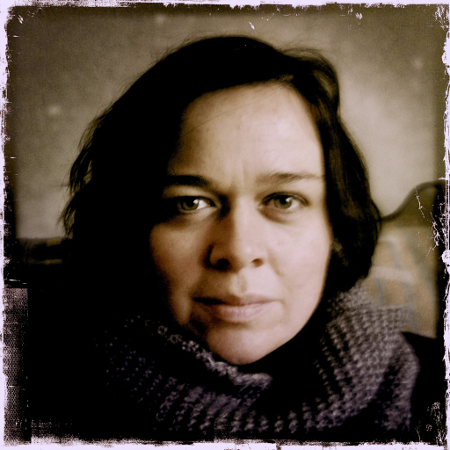
Simon: One of the striking features of Dear Esther‘s soundtrack is its recording, and how it emphasises the game and music’s sense of isolation and loneliness. Could you describe the ideas and concepts behind Dear Esther‘s album recording and how you achieved the desired effects in the studio and later in the mix?
Jessica Curry: I always try to assemble the best team that I can afford — I’ve learned that if you let talented, knowledgeable people get on with what they do best then you’re usually going to come out with a great result. Good musicians are very intuitive; they can read a score in a way that never fails to move me. They interpret these dots on a page and make something magical out of those abstract marks. They just “got” the score from the moment they started playing; they imbued that sense of haunted loneliness and it was awe-inspiring.
Then you have the invisible stars of the show, the studio engineers. The way they set up the mikes, their mix, the mastering process — it’s all a crucial part of the process. Again, it’s a case of knowing what you want but not micro-managing and letting them take it forwards. I always say that the day you go into the studio is the day you give your work away, but in the best possible way.
Simon: On Korsakovia, another title from thechineseroom, you worked as the game’s composer and sound designer. Was this new area of work a daunting task for you, and in how far did you feel that the textural, sound effect-laden nature of your music for Dear Esther helped you ease into this new role? How did you balance the role of music and sound effects in the game and in how far did they merge into one in the final product?
Jessica Curry: Dan and I learned a lot making Korsakovia. In some ways, we see it as a failed experiment but nothing is ever wasted and a lot of good and interesting stuff came out of it. Yes, it was daunting and it’s not my favourite soundtrack, but I can hear the building blocks for later work — it was a safe place to try things out and you can only get better by making lots of games, writing lots of music and putting it out there.
I would never, ever call myself a sound designer — I did it because there wasn’t the money to pay someone to work on the project. Working with Samuel [Justice], our incredibly talented sound designer, on the new games is such a pleasure. It is the most amazingly complex job that requires a terrifying mix of creative and technical skill. Like all clever people, he makes it look easy, which is a feat in itself!
Simon: If I remember correctly, one of the ideas behind Korsakovia is to confront gamers with a non-anthropomorphic opponent that takes on a shape which you usually don’t encounter in games. How did you choose to musically portray this abject alien-ness? How did you ensure that the sounds ofKorsakovia‘s antagonists would remain scary, given that repeatedly using non-familiar sounds to portray the unknown turns these sounds familiar at some stage?
Jessica Curry: I collated the strangest combination of natural and mechanical sounds and stitched them together to make a Frankenstein’s monster! I had whale sounds, factory noises, human screeching — it was crazy. I wish we had worked with a sound designer on this project as I think they would have brought so much more to the game. I did the best I could given my very limited experience, but it could have been so much better with an expert on the job.
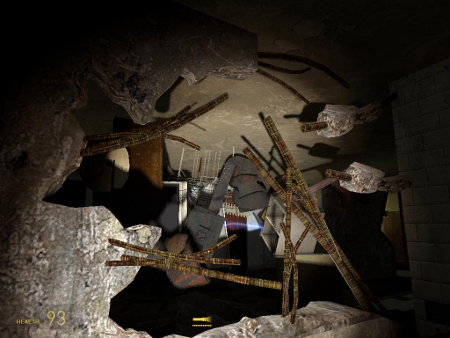
Simon: Both Dear Esther and Korsakovia are games that try to blur the boundaries between reality and dream (or nightmare). At the same time, both games aim for this effect to create very different emotional responses. How did you put the blurring of what’s real and imagined into music and how did your methods for doing so differ between the titles?
Jessica Curry: I find that question really hard to answer. Like I said, my compositional process is very difficult to quantify. It’s very tough for me to intellectualise how and why I made various choices for different projects. I just sit at the piano and out it comes. I’m aware that this is a deeply unsatisfying answer! When I wrote the large scale work Perpetual Light: Requiem for an Unscorched Earth, I actually dreamed some of the music and would get up in the morning and just write it out. Where does this music come from? I find it fascinating. Often people ask me where I get my ideas from and I just can’t answer. Creativity is a deeply mystifying process which is what makes it so magical.
Simon: In another interview, you mentioned that when you started work on Dear Esther, you “didn’t know what [you] were doing”, in the sense that you weren’t aware of the conventions of video game scoring. Now that you’ve composed several game scores, do you still feel that liberating feeling of being able to not follow conventions because you’re unaware of them? Do you think you have developed a certain style for your game scores that sets them apart from other work?
Jessica Curry: I still feel like I’m learning new things every day, and to be honest, I think something has gone horribly wrong if you don’t feel like that! If I don’t know, I ask. I used to be embarrassed not to know how to do some things, but when you do ask you learn that people are usually more than happy to share their expertise.
To be honest, I think that some music is written very cynically and it follows the convention of what they think people will expect to hear. I write from the heart and I’ve never given a damn if what I do is considered commercial. It’s so hard to quantify your own style but people tell me that my sound is melancholy, epic and moving. I’m delighted that people want to listen to the music and I’m just so happy to do what I love for a living.
Simon: You are one of the few composers who is also the (co-)director of a game studio, thechineseroom. How did you move into this role and how has it impacted your work and specifically your collaboration with Dan?
Jessica Curry: As I said earlier, Dan and I have worked together for nearly 10 years now and thechineseroom felt like the logical next step. He’s a writer, I’m a composer — we’re both passionate about making interesting, inspiring, beautiful experiences. It has impacted our work, because as well as being collaborators we’re business partners and we now have to wear these different hats. In terms of business, it’s been a steep learning curve to say the least — we have the most understanding accountant on the planet and I often imagine him going home at the end of the day, putting a cold flannel on his forehead and breathing a deep sigh of relief that he’s survived another day of our baffling and possibly quite stupid questions.
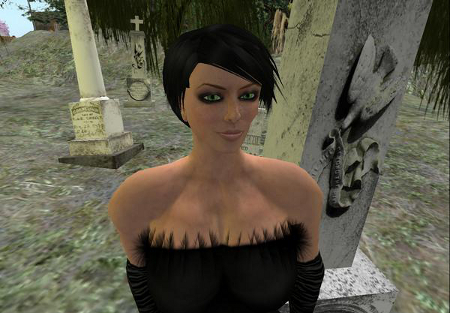
Simon: One of the most intriguing of your works outside of the realm of game scores is The Second Death of Caspar Helendale. What interested you in the idea of writing music for the death of a Second Life avatar?
Jessica Curry: We saw a commission advertised that was looking for artistic works made in Second Life. Dan and I were interested in what happened to all of the unwanted and discarded avatars — “living” this half-life in cyberspace. The impossibility of ever fully disregarding an avatar, as they remain stored in permanent potential for recreation has resonances with the notion of an individuals’ life surviving their physical death through memory and the traces they leave behind. At the same time, the overwhelming disposability of avatars gives the lie to insistence of many users that they represent real aspects of their real selves.
Out of this came the idea of Caspar, an avatar who presides over his own funeral. His final thoughts and feelings on both his death, and the meaning of death in general, were shared with the assembled mourners-to-be and Dan wrote the most beautiful text to accompany this, my favourite line being “I fear no evil, protected from the shadow of death by corporate policy.” I loved this project and we were fortunate that the Royal Opera House were interested in showcasing it. So we had a live audience at the ROH and a simultaneous virtual audience in Second Life. The live audience could see the virtual one on a giant screen and the music was streamed lived into Second Life.
Simon: Requiems have a long-standing tradition in the canon of Western classical music. In how far did you make recourse to this musical heritage when writing The Second Death of Caspar Helendale, and in what regards did you divert from the same heritage to underline this particular requiem’s unusual subject?
Jessica Curry: When I started working on the project I played around with interspersing contemporary soundscapes with the more traditional score, but to me it just felt forced and simply wasn’t working. At this point in my career I was at a crossroads; up until this point I’d been working on much more experimental sound and installation projects and I described myself as a sound artist. And then I wrote the Dear Esther score and I had this epiphany — I wanted to be a composer! So for me Caspar was this statement: “I want to write beautiful music with real instruments.” I love the music, because like with the Dear Esther score, it has a passion and an unashamed heart.
This was a very exciting time for me and when I made the switch from sound artist to composer, everything started happening for me. I think I always felt afraid to call myself a composer because I didn’t have classical training and I still get quite nervous sometimes like I’ll be found out by the establishment. But the reaction to Esther has been so extraordinary, and that gave me a huge amount of confidence.
Simon: Two of thechineseroom’s upcoming titles are Amnesia: A Machine for Pigs and Everybody’s Gone to the Rapture. Could you give us an insight into your work on these games and what we can expect? Are there plans for a separate album release at this stage?
Jessica Curry: These two titles just couldn’t be more different! A Machine for Pigs is an immense amount of fun to write — I’ve been given the opportunity to write some epic themes for this game and it’s so different to anything I’ve written before. I’ve scared myself a few times with my headphones on — when I’ve forgotten that I’ve left Logic running and then a massive jump scare starts playing and I literally do jump out of my seat.
Everybody’s Gone to the Rapture is exciting for me as it’s going to be the largest ensemble I’ve worked with for a long time. The music for this is really coming together at the moment and I’m hoping that it’s going to be my best work yet.
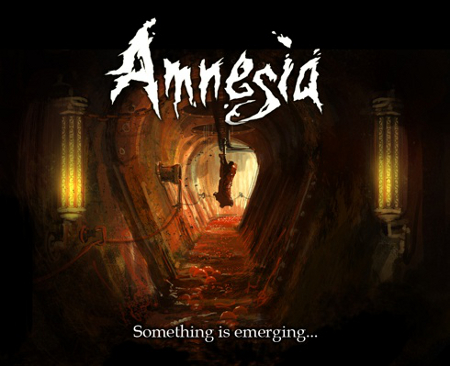
Simon: Many thanks for your time today, Jessica Curry. Is there anything else you’d like to say aboutDear Esther or your work in general? Do you have any messages to readers from around the world?
Jessica Curry: I’d like to say thank you for such detailed and thoughtful questions — it was a lovely interview to do. And a massive thank you to all of the people who have bought the soundtrack to Dear Esther and to the many people who have written to express their appreciation for my music. This matters to me more than I can say.
Posted on May 1, 2012 by Simon Elchlepp. Last modified on February 27, 2014.



